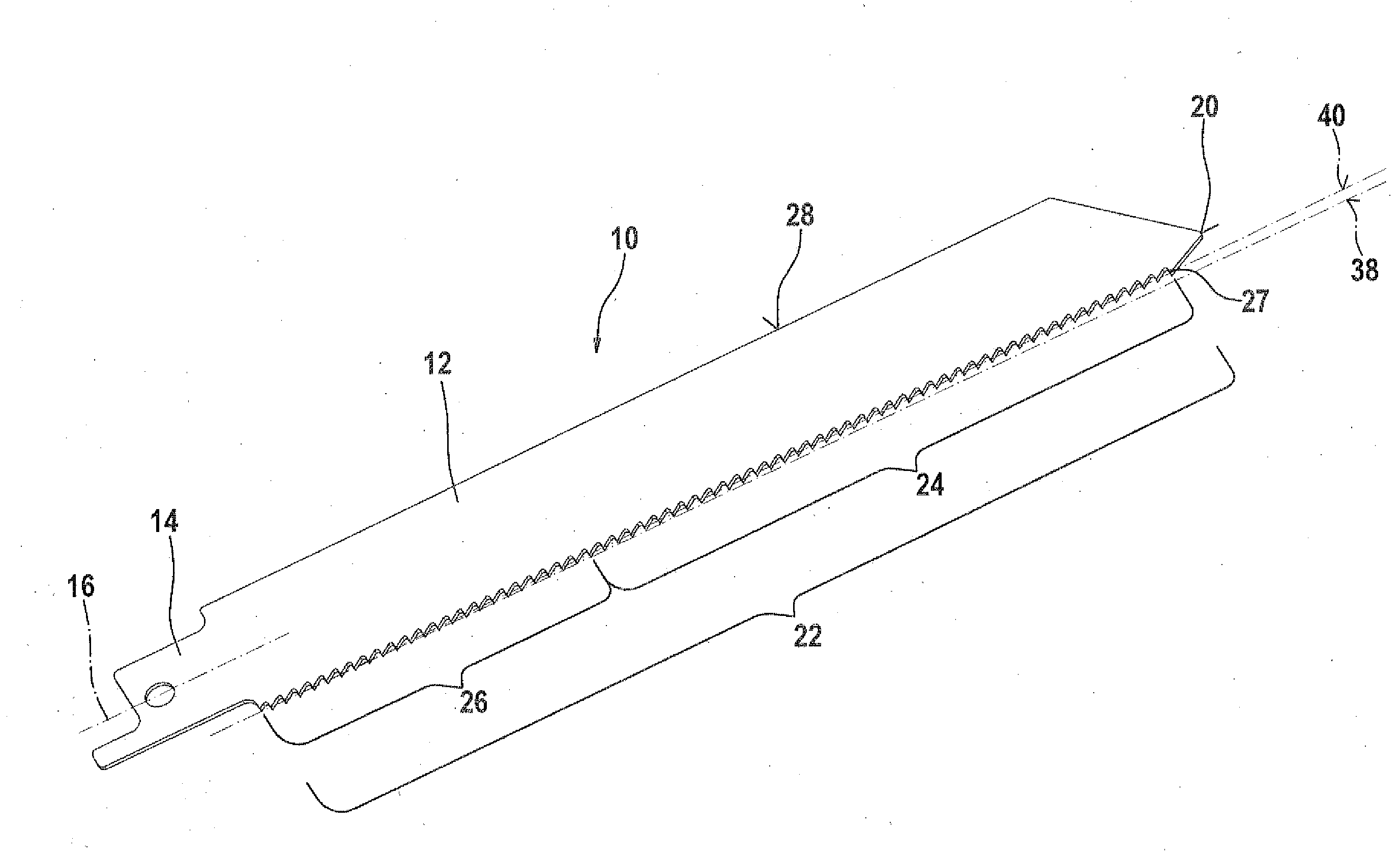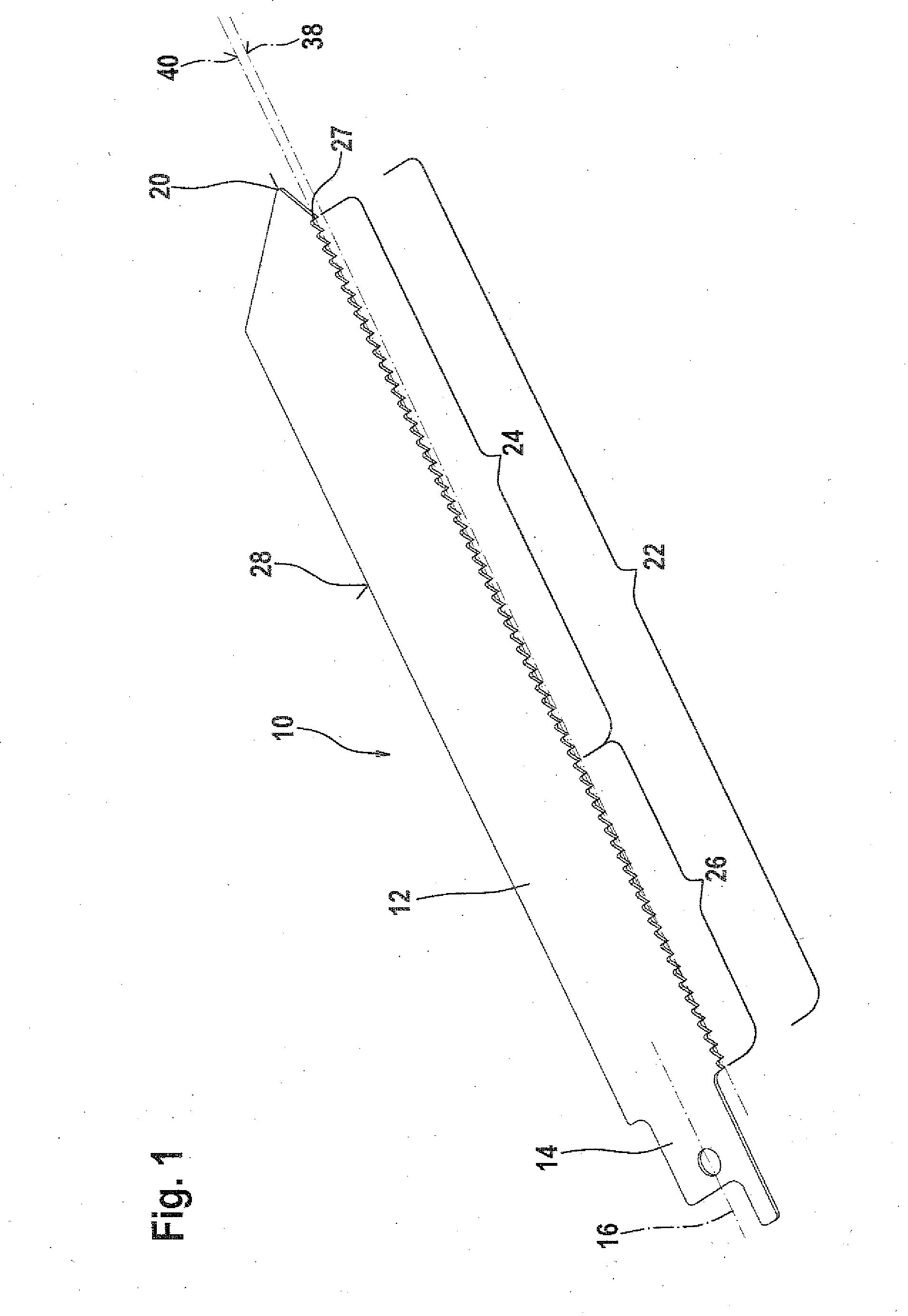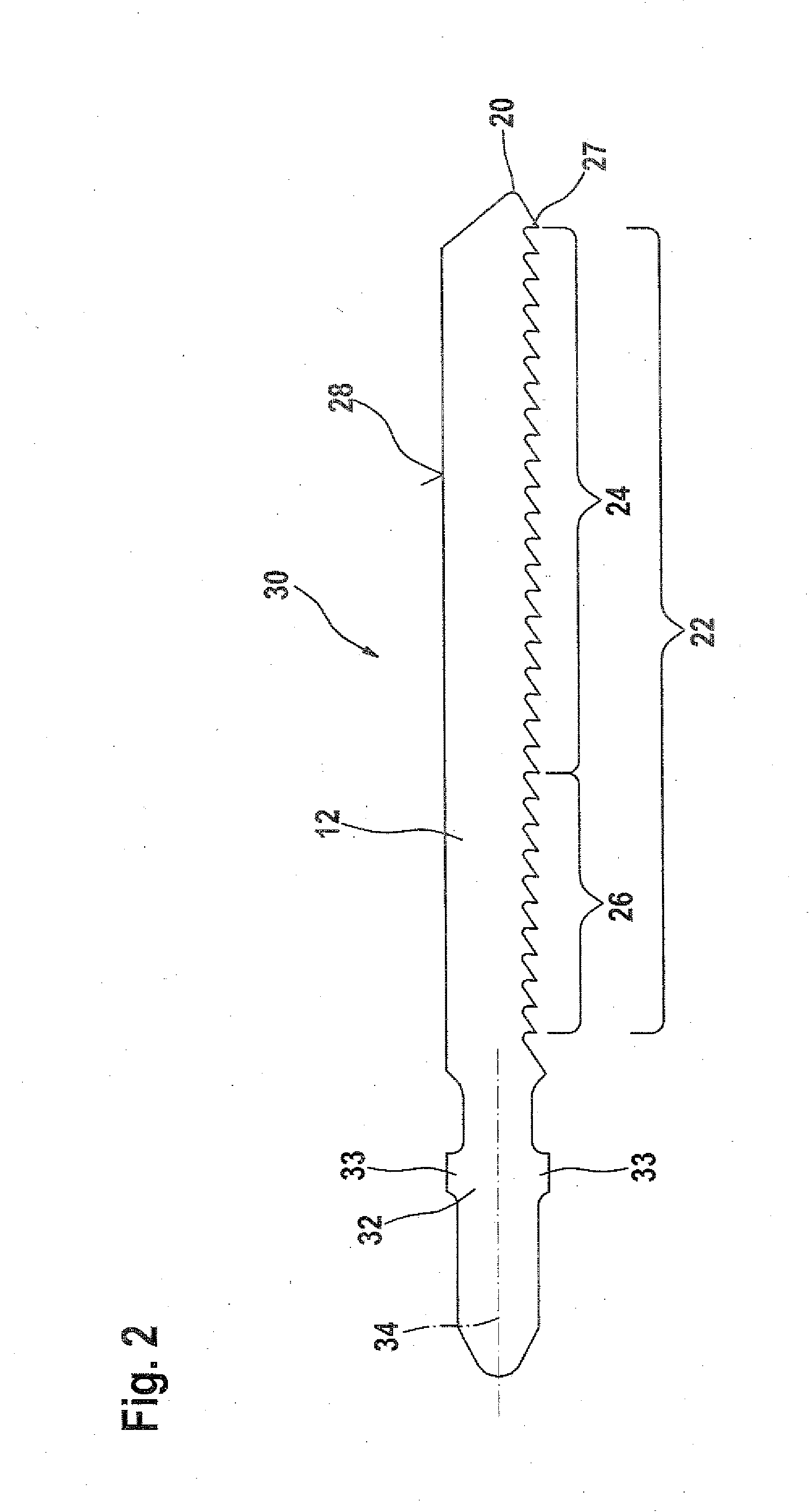Jigsaw blade for hand-held power jigsaws
a technology of jigsaw blades and power jigsaws, which is applied in the field of jigsaw blades, can solve the problems of premature failure increased vibration and jolt, and increased service life of the saw blade, so as to improve the cutting performance and cutting quality, increase the bending moments and deformations, and the inclination of the row of teeth
- Summary
- Abstract
- Description
- Claims
- Application Information
AI Technical Summary
Benefits of technology
Problems solved by technology
Method used
Image
Examples
Embodiment Construction
[0023]The sabre saw blade 10 according to the invention shown in FIG. 1 is composed of a long, flat, blade-like working body 12 that has the clamping end 14 at the rear and a saw blade tip 20 at the front. The clamping end 14 has a central axis 16 and is narrower than the working body 12 and is therefore relatively sensitive to powerful bending moments in the plane of the saw blade 10. At the saw blade tip 20, the lower flat side is adjoined by a row of saw teeth 22 extending toward the rear. A saw blade spine 28 extends on the rear side or flat side of the working body 12.
[0024]A first tooth row region 26 of the row of saw teeth 22 immediately adjacent to the clamping end 14 is inclined positively in relation to the axis 16 of the clamping end 14, at an angle of approximately 5°—downward in the viewing direction of the drawing. The inclined first tooth row region 26 measures approximately ⅓ the length of the row of saw teeth 22 and transitions into a second tooth row region 24 exte...
PUM
| Property | Measurement | Unit |
|---|---|---|
| angle | aaaaa | aaaaa |
| inclination angle | aaaaa | aaaaa |
| angles | aaaaa | aaaaa |
Abstract
Description
Claims
Application Information
 Login to View More
Login to View More - R&D
- Intellectual Property
- Life Sciences
- Materials
- Tech Scout
- Unparalleled Data Quality
- Higher Quality Content
- 60% Fewer Hallucinations
Browse by: Latest US Patents, China's latest patents, Technical Efficacy Thesaurus, Application Domain, Technology Topic, Popular Technical Reports.
© 2025 PatSnap. All rights reserved.Legal|Privacy policy|Modern Slavery Act Transparency Statement|Sitemap|About US| Contact US: help@patsnap.com



